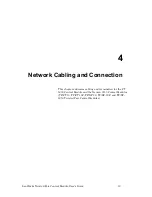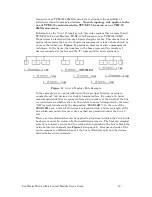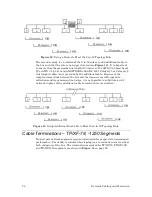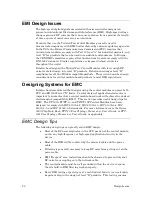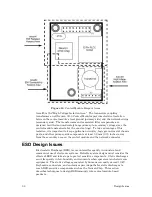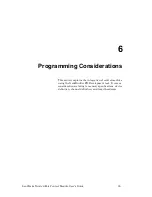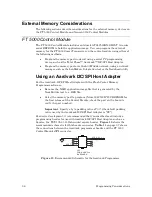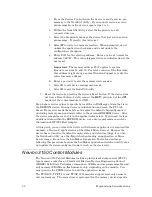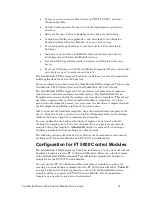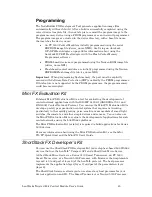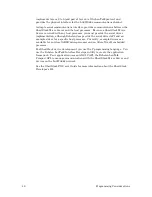
LonWorks Twisted Pair Control Module User's Guide
33
Designing Systems for ESD Immunity
ESD hardening includes the following techniques:
•
Provide adequate creepage and clearance distances to prevent ESD hits
from reaching sensitive circuitry
•
Provide low impedance paths for ESD hits to ground
•
Use diode clamps or transient voltage suppression devices for accessible,
sensitive circuits
The best protection from ESD damage is circuit inaccessibility. If all circuit
components are positioned away from package seams, the static discharges can
be prevented from reaching ESD sensitive components. There are two measures
of “distance” to consider for inaccessibility: creepage and clearance. Creepage is
the shortest distance between two points along the contours of a surface.
Clearance is the shortest distance between two points through the air. An ESD
hit generally arcs farther along a surface than it does when passing straight
through the air. For example, a 20 kV discharge can arc about 10 mm (0.4
inches) through dry air, but the same discharge can travel over 20 mm (0.8
inches) along a clean surface. Dirty surfaces can allow arcing over even longer
creepage distances.
When ESD hits to circuitry cannot be avoided through creepage, clearance and
ground guarding techniques (for example, at external connector pins), explicit
clamping of the exposed lines is required to shunt the ESD current. Consult a
good text on EMC for advice about ESD and transient protection for exposed
circuit lines. In general, exposed lines require diode clamps to the power supply
rails or Zener clamps to chassis ground to shunt the ESD current to ground while
clamping the voltage low enough to prevent circuit damage. The control module’s
I/O and control lines are connected directly to the external connector (
JP1
for the
FT 5000 Control Module;
P1
for the Neuron 3150 Control Modules) without any
ESD protection beyond that provided by the Smart Transceiver or Neuron Chip
itself. If these lines are likely to be exposed to ESD in an application, protection
must be added on the application electronics board.
on page 34 shows
an example of the use of diode clamps to protect the control module I/O lines in a
keypad scanning application.
The control modules use diode clamping and transformer isolation to shunt ESD
from the network connector (
JP1
for the FT 5000 Control Module;
P2
for the
Neuron 3150 Control Modules) to ground. It is therefore important to provide a
low impedance ground path from the
JP1
connector or the mounting hole near
P2
to the main system ground. The Neuron 3150 TP/FT-10 also includes spark
gaps (designed to arc at approximately 1000 to 2000 V) between each of the
network lines to ground and a diode-capacitor protection circuit to absorb ESD
energy. The Neuron 3150 TP/FT-10F uses similar, but not identical, protection
circuitry.
Summary of Contents for LONWORKS FT 5000
Page 1: ...LONWORKS Twisted Pair Control Module User s Guide 078 0015 01F...
Page 18: ...10 Mechanical Considerations Figure 5 Neuron 3150 Control Module Mechanical Footprint...
Page 20: ...12 Mechanical Considerations Figure 8 Vertical Component Profile for the Control Modules...
Page 22: ......
Page 26: ......
Page 34: ......
Page 55: ...www echelon com...

